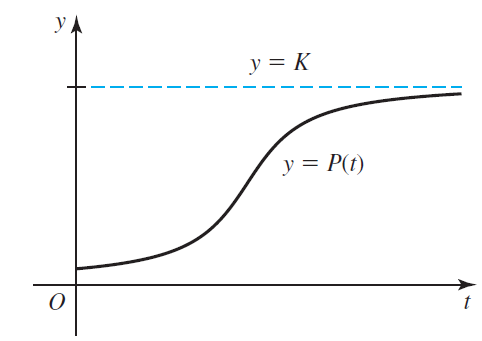Scientists often use the logistic growth function to model population growth, where P 0 is the initial
Question:
Scientists often use the logistic growth function to model population growth, where P0 is the initial population at time t = 0, K is the carrying capacity, and r0 is the base growth rate. The carrying capacity is a theoretical upper bound on the total population that the surrounding environment can support. The figure shows the sigmoid (S-shaped) curve associated with a typical logistic model.
to model population growth, where P0 is the initial population at time t = 0, K is the carrying capacity, and r0 is the base growth rate. The carrying capacity is a theoretical upper bound on the total population that the surrounding environment can support. The figure shows the sigmoid (S-shaped) curve associated with a typical logistic model.

The logistic model can be used for situations in which the initial population P0 is above the carrying capacity K. For example, consider a deer population of 1500 on an island where a fire has reduced the carrying capacity to 1000 deer.
a. Assuming a base growth rate of r0 = 0.1 and an initial population of P(0) = 1500, write a logistic growth function for the deer population and graph it. Based on the graph, what happens to the deer population in the long run?
b. How fast (in deer per year) is the population declining immediately after the fire at t = 0?
c. How long does it take the deer population to decline to 1200 deer?
Step by Step Answer:

Calculus Early Transcendentals
ISBN: 978-0321947345
2nd edition
Authors: William L. Briggs, Lyle Cochran, Bernard Gillett





